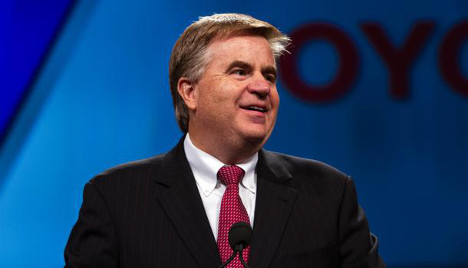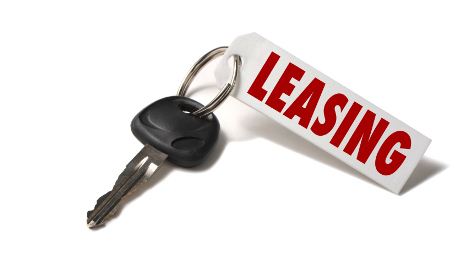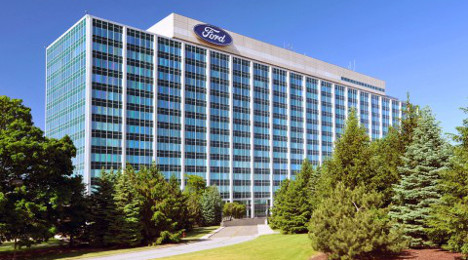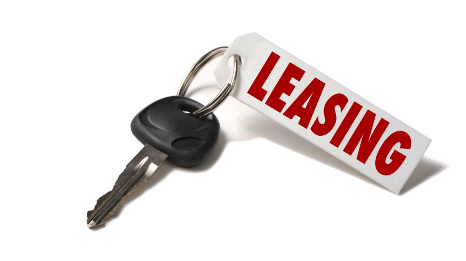With leasing continuing to gain momentum, CNW Research compared the contract residual value projection with the likely actual value at the end of term.
In the August Retail Automotive Summary, firm analysts found that last month’s industry average settled at 85.88 percent — a figure representing the difference between the actual contract and the eventual actual sale price. That average has been on a steady rise since the beginning of the year when CNW pegged it at 84.65 percent back in January.
Of the six automakers included in the latest report, three brands had their level come in above the average mark, and three other badges settle below it.
The trio that jumped above the average included:
— Ford: 86.79 percent
— Chrysler: 86.70 percent
— Honda: 86.01 percent
The three brands that fell below the average were:
— Toyota: 85.76 percent
— Nissan: 85.13 percent
— General Motors: 81.52 percent
While the other five OEMs have either held steady or ticked up slightly since the beginning of the year, GM’s reading has declined during six of the past seven months. GM started the year at 83.59 percent, according to CNW.
The key drivers to such strong growth in the new-car sales environment have more to with healthier economics than simply a carryover of pent-up demand — and one example of such a fortuitous sign has to do with leasing and lease returns.
That’s according to prepared comments by Toyota executive Bob Carter at 2014 J.P. Morgan Auto Conference, released for the media on Tuesday.
In the comments, Carter — who is senior vice president of automotive operations at Toyota Motor Sales U.S.A. — said Toyota is anticipating the industry as a whole will tally 16.3 million new-vehicle sales this year, which would be more than 5 percent stronger than the 2013 figure.
Carter indicates that this is “healthy growth, but at a slightly slower pace than the past few years,” while at the same time emphasizing the importance of what’s actually spurring these gains.
“This ‘new’ growth is being driven by stronger economic and market conditions … not hangover pent-up demand from the recession,” he said in the commments.
“For instance, 400,000 more customers than last year are expected to come off leases from all brands … and most will turn around and buy or lease a new vehicle,” Carter added. “Leases made up 20 percent of new-vehicle registrations in 2013 and that trend continues this year, setting up returning customers again two years or more down the road. ”
He went on to emphasize the role that auto loan rates, which have been at “historically low” rates of 3 percent to 4 percent, have played in spurring new-car sales growth, plus the impact of younger buyers entering the market.
“For example, from 2009 to 2012, vehicle sales to those born after 1980 more than doubled to 2.5 million,” Carter said. “Sales increased another 20 percent the past two years and are expected to climb 10 percent this year to 3.5 million vehicles.
“So we have a lot of favorable signs,” he continued. “But if you want “real proof”of consumer optimism and a stronger economy, look at July auto sales. Last month, our industry sold more than 1.4 million vehicles … up 9 percent … the best July sales in eight years. It was the sixth consecutive month of year-over-year gains and the third straight month with sales of more than 1.4 million.”
During an early August conference call with the media, Kelley Blue Book senior analyst Alec Gutierrez said that leasing was accounting for a little more than 25 percent of all new-vehicle retail sales year-to-date, calling it a “key driver” behind the new-car market’s strength.
That level beats 2013 lease penetration figures that averaged between 22 percent and 23 percent, and the historical norm in the 2000s of approximately 20 percent.
What’s more, after moving steadily upward the past few years, the leasing rate is the highest that KBB has observed since “at least 2000,” Gutierrez said.
“It’s a combination of several factors (driving leasing strength),” he explained. “Knowing that leasing is really driven based on the residual value of the vehicle, which is driven by the used-car market, we look at what’s happening in the used-car market today, and we’re seeing wholesale prices across the nation very, very close to the historic highs that we saw in 2011 and 2012, especially for these late-model vehicles, your 2012s, 2011s, even your 2013s.
“As our residual team looks ahead in terms of how that’s going to translate into where the marketplace is going to be two, three and four years down the road — which is really what drives leasing — while values may ease to some degree, we still have a lot of confidence the market is going to remain strong for several years to come,” Gutierrez continued. “On the one hand, residuals are strong. The second major component that drives your lease payment is going to be the money factor which is driven by interest rates, and as we all know, interest rates remain at historic lows, which has really helped to drive financing on a number of fronts.”
A third factor that comes into play is higher new-car transaction prices, Gutierrez says. That’s something that Swapalease.com dove into with a recent analysis.
Swapalease’s Scot Hall said that although what he has found to be the No. 1 factor driving the increased leasing is the desire among consumers to have the latest and greatest technological amenities, the affordability that leasing offers is a major driver, as well. And as vehicles become pricier, leasing becomes more attractive, as the company suggested in a recent analysis.
The site did an “apples-to-apples-to-apples” cost comparison — a detailed version of which can be found here — of three different scenarios: a 72-month loan on a $30,000 MSRP vehicle; leasing that same car from a dealer at two 36-month intervals; and taking over an 18-month existing lease four times in a row.
For more insight on the leasing market, stay tuned to the Sept. 1 edition of Auto Remarketing, our special look at Fleet, Lease & Rental Trends.
What published reports back in May indicated was in the works came to fruition on Tuesday — Gannett Co. will soon solely own Cars.com.
Gannett signed a definitive agreement to acquire full ownership of Cars.com as part of a structure to create two new publicly traded companies with scale. Under the agreement, Gannett will acquire the 73 percent interest it does not already own in Classified Ventures, which owns Cars.com, for $1.8 billion in cash.
According to an announcement from the McClatchy Co., Cars.com was valued at $2.5 billion. Classified Ventures, whose primary asset is Cars.com, is a joint venture among McClatchy, Gannett, Tribune Media Co., Graham Holdings Co. and A. H. Belo Corp. McClatchy owns 25.6 percent of Classified Ventures.
Both McClatchy and Gannett said the transaction is expected to close before the end of 2014 and is subject to normal regulatory reviews.
Gannett’s acquisition and reorganization plans create one segment that exclusively will be focused on its broadcasting and digital businesses, which includes Cars.com, and the other on its publishing business.
Gannett president and chief executive officer Gracia Martore explained the moves will create two focused companies with increased opportunities to grow organically across all businesses as well as pursue strategic acquisitions.
“The bold actions we are announcing today are significant next steps in our ongoing initiatives to increase shareholder value by building scale, increasing cash flow, sharpening management focus and strengthening all of our businesses to compete effectively in today's increasingly digital landscape,” Martore said.
“Cars.com doubles our growing digital business, while our recent acquisitions of Belo and London Broadcasting doubled our broadcasting portfolio,” Martore continued. “These acquisitions, combined with our successful initiatives over the past 2½ years to strengthen our publishing business, make this the right time for a separation into two market-leading companies."
Auto Remarketing first mentioned a report from Reuters about this deal back on May 7.
Future of Cars.com
Officials highlighted Cars.com now is the No. 2 auto-related site with approximately 30 million visits per month. Annual visits have grown at a rate of 17 percent for the last several years.
Since its inception, the company said Cars.com has grown consistently, and today the site displays approximately 4.3 million new and used vehicles from nearly 20,000 dealers.
“Acquiring all of Cars.com further accelerates Gannett's digital transformation and is consistent with the company's focus on local media and marketing services,” Gannett officials said. “The automotive sector is the single largest and most important vertical for local advertising revenue, and Cars.com is one of the few proven and established digital solutions of scale in this market.”
Upon closing of the transaction, officials explained McClatchy, Tribune Publishing, The Washington Post and A. H. Belo will enter into new, five-year affiliate agreements with Cars.com that will allow each company to continue to sell Cars.com products and services exclusively in their local markets. T
McClatchy's president and CEO Pat Talamantes noted the affiliate agreements increase the wholesale rate at which the affiliates will purchase Cars.com products.
“Cars.com is a shining example of what the newspaper industry can accomplish working together,” Talamantes said. “We joined forces and from scratch developed a highly successful Internet company that has benefited consumers, auto advertisers, our individual companies and our shareholders. After 17 years, the time is right for an ownership change. We're happy to monetize a valuable digital asset and feel great that Gannett, our long-term partner in CV, will continue to innovate in order to grow the company and move it forward.
"We will continue to provide highly-effective digital sales and marketing tools to the automotive advertisers in each of our markets and we look forward to our continued partnership with them,” he continued. “Our commitment to grow our Cars.com business remains as strong as ever.
“We are proud that McClatchy has some of the best Cars.com sales professionals in the country. Our new affiliate agreement offers us the flexibility to provide the products and appropriate pricing for Cars.com to each market while leveraging our experienced and energized sales force that knows how to get the best results from these products for advertisers,” Talamantes went on to say. “We believe this is a great outcome for our local auto advertisers."
How Deal Is Being Financed
Gannett explained that it will finance the acquisition through cash on hand, the issuance of approximately $650 to $675 million in new senior notes and borrowings under the company's revolving credit agreement.
The transaction is expected to contribute approximately $155 million in annual incremental 2014 pro forma EBITDA to Gannett, which includes the impact of the new affiliate agreements. Gannett officials indicated the transaction price implies a multiple of 11.7 times pro forma 2014 estimated incremental EBITDA.
“Based on the more favorable economics associated with the new affiliate agreements, as well as anticipated cost efficiencies, the company expects a pro forma 2015 estimated incremental EBITDA multiple of 9.2 times,” Gannett officials said. “The company will maintain a strong balance sheet, with anticipated pro forma net leverage initially at approximately 2.8 times, which will be reduced over time.”
Commenting on the finance part of the deal, Talamantes said, “This is a significant transaction for our company and its shareholders, and we are very pleased with how it came together. We received a great price that reflects the strength of the Cars.com franchise while maintaining the right to sell its products and services to our customers.”
Ford Credit’s lease return volume this year has already eclipsed the 100,000-unit mark, with the second-quarter tally showing a substantial year-over-increase.
That’s according to statistics from Ford Motor Co.’s Q2 fixed income conference call that Manheim chief economist Tom Webb posted to his blog late last week.
The data sets put Ford Credit’s quarterly lease return volume around 50,000 units for Q2, up from 27,000 in the year-ago period.
This year-over-year increase occurred despite a sequential decrease from the 60,000-unit lease return volume in the first quarter of 2014.
And consider this: year-to-date off-lease volume for Ford Credit is now in the neighborhood of 110,000 units, just through six months. For full-year 2013, it was around 114,000.
It's possible, or even probable, that many people who lease a vehicle have no intention of keeping the car after their leasing period ends. But 22 percent, according to CNW Research, do end up purchasing the vehicles they lease within six months of the end of the lease’s term. But why do nearly one-in-five people seek a title after ending their lease?
The answer, for 16.2 percent of those surveyed in CNW’s yearly Lease Trak Study, is pretty simple: they look at it as a long-term test drive.
The second most-common reason for buying their car at the end of their lease term, according to Art Spinella, CNW’s president, was simply due to the lease payment on a replacement being too high.
“Those two reasons for buying a leased vehicle are consistent, if nothing else,” Spinella said in his monthly report. “They were the leading rationales in both 2000 and 2002 as well as most of the intervening years.”
In addition, CNW spotted an interesting trend when following up with lessees a year after their leases ended. The firm found when end-of-term lessees had either given or transferred the car to someone else in their family after the lease’s end, nine out of 10 times, the car had already been replaced in a year's time.
Leasing penetration rates rising to near-record highs at the same time that more and more people are turning to shorter lease terms isn’t something that Scot Hall finds to be a coincidence.
In fact, the executive vice president of Swapalease.com said these movements may go hand-in-hand.
“I think it actually has the same message on both accounts, and I think there is a common thread between those (trends),” Hall said. “What we’re finding through our users is that people understand that the technology changes on these vehicles is greater than ever on a year-to-year basis.”
He added: “I think the fact that more people are leasing almost at a historically high rate — and we actually anticipate it going above that — and the fact that they want shorter-term leases to boot is really saying the same thing.”
But the impacts of these trends go far beyond the side of the industry facing the retail consumer. They also play a role in remarketing, especially considering how lengthy financing terms have become.
In the latest State of the Automotive Finance Market report, Experian Automotive indicates that loan terms reached their highest level since the company started reporting the trends eight years ago.
Experian said that the first quarter of this year marked the first time that average loan terms reached 66 months. What’s more, 73- to 84-month-term loans commanded nearly a quarter of the market in Q1, an increase of 27.6 percent year-over-year.
“As the cost of purchasing a new vehicle continues to rise, consumers clearly are stretching the loan term to help lower monthly payments, keeping them at a manageable level,” Experian senior director of automotive credit Melinda Zabritski said in the June report.
So, this notion of shorter-term leases may help to counteract these longer loan terms; leased vehicles exiting a consumer’s driveway at a more rapid pace also means they are entering the wholesale market quicker.
“On the remarketing side, that is good inventory for those manufacturers to be able to sell their retailers on a certified pre-owned basis and also offset some of those longer-term loans, because they wouldn’t have seen those cars as soon as they have in years past in terms of what the equity position would be on a trade-in,” Hall said.
When asked whether shortened lease cycles would create a prickly scenario of too many cars coming back at one time and lowering values, Hall said that while that’s certainly a possibility, automakers tend to put measures in place to avoid such headaches.
“There’s always the possibility that it will create problems, and a lot of that is market-dependent at the time. So it’s one of those things where you might not necessarily know,” Hall said.
But, he added, what automakers often do is create a solid term-length balance in their lease portfolios.
And while he said it’s not be as simple as writing a third of your portfolio at 24-month terms, a third at 36 months and a third at 48 months, striking some sort of balance helps.
“They won’t flood their remarketing folks with too many Camrys at one time or too many Avalons at one time or too many Corollas, whatever the case may be,” he said. “That is definitely something that is viewed by the manufacturer when they’re taking lease terms into consideration, but ultimately … that’s going to be more of a secondary thought than accommodating what the consumer need is.”
And the message from consumers, he said, is that many consumers want to change cars at a faster rate — often to keep up with the advancing technologies and amenities in cars — and that there may possibly be a greater shift from ownership to leasing.
And many OEMs are accommodating these customer demands when they set up leasing terms. What's more, on its own site, Swapalease found that 36-month lessees in May were, on average, looking to get out of their leases in 15.1 months.
In early June, analysts said General Motors’ recalls had not influenced the leasing market much yet, at that point, with incentives staying relatively stable.
But the tides may be turning, as GM brands showed the most active lease price movements this past month.
According to latest report on lease deals from Wantalease.com, it is GM-brand leases that, oddly enough, are showing both the largest price jumps and declines entering July.
Data from the site suggests that new lease deals offered on the Buick Regal Premium are down to $229 per month, falling significantly from $426.46 in May.
The Buick Lacrosse Is also dropping at a quick rate. This model was being offered for $249 a month in June, down from $425.51 in May.
GM also notched the third-largest price drop in June: The Chevrolet Cruze LT can be leased for $159 monthly, down from the $226 offer in May.
All three GM lease deals are being offered with $0 down on terms of 36 or 39 months, showing strong incentive rates for these models as we head into the summer slowdown.
But here's an interesting find on the other end of the spectrum: GM models also saw some of the largest price increases in leases this past month.
For example, the GMC Yukon is going for $580 monthly, up from $499 in May.
Next up, the Cadillac CTS also saw a price hike in June, with lease deals offered at $589.53, up from $535.92 in May.
The biggest leasing price hike this past month was the Ford Explorer FWD, with a June offering of $433.96, up from $361.79 in May.
Earlier this month, a sister company to Wantalease — Swapalease.com — reported that few GM brands were currently listed with a cash incentive.
According to incentives data from May listings, only 5 percent of vehicles with incentives were from GM. Swapalease executives believe the GM recalls in the news recently have had little impact on a person’s ability to attract someone else to take over their lease.
Overall, incentives in the Swapalease.com marketplace have fallen slightly from the same time a year ago, as of the end of May. The average personal cash incentive offered came in at $2,215.56 at the end of May, compared with an average of $2,464.78 last year.
More applicants who already have a large amount of debt are taking a toll on approval levels at Swapalease.com.
Site officials reported on Wednesday that lease credit approvals during the month of May came in at 60.6 percent — the lowest monthly level of the year and down from January when the approvals rate stood at 70.6 percent.
Despite the overall approvals rating sliding down from the 2014 high in January, Swapalease.com attributed the recent slide to a significant higher number of applications during the last two months.
In fact, 44.7 percent more applications have been processed in May and April compared to the previous two months. Regardless, Swapalease.com considers the 70 percent approval mark to be “healthy” for the marketplace.
Officials also acknowledged that what a difference a year makes.
The year-to-date approvals rating so far in 2014 stands at 65.9 percent, compared with 75.3 percent the same time a year ago. In addition to a higher number of credit applications overall, Swapalease.com executives attribute the slide to an increased number of younger drivers with less-than-stellar credit applying to take over a vehicle after also being turned away at a dealership.
“Since credit is analyzed differently through a lease transfer and the monthly price has already been determined, many car shoppers look to simply take over an existing lease,” Swapalease.com executive vice president Scot Hall said.
“Particularly with student loan debt still at high levels, many younger car shoppers continue to face an uphill battle in seeking to buy or lease transportation,” Hall continued.
Hall went on to mention an increased appetite for consumer debt growth also contributes to the falling approvals rate.
Citing data from the Federal Reserve, Swapalease.com pointed out total consumer credit increased by $26.85 billion in April, to $3.18 trillion.
Site officials added that the Fed also stated this pace of consumer debt was growing at a 10.2 percent annual rate, an increase that must be taken into account when car shoppers apply to take over a lease.
Swapalease.com indicated that individuals typically are looking to escape their leases simply because they can no longer afford to make the payments, they’re bored or are ready for a different vehicle, or they’ve had a major lifestyle change such as a new baby on the way.
But site officials spotted six new reasons gaining traction. While many of these reasons are unorthodox for the Swapalease.com marketplace, the company says they all have some rationality behind them.
Those six circumstances include:
• Toll charges: Drivers look to avoid a messy financial situation if automatic toll charges are accidentally passed on to the lease company.
• Taxes: Some states double tax your lease on the price of the car and your monthly payments, or on the entire vehicle MSRP.
• Avoid wear and tear fees from dealer: Drivers look to escape their lease to avoid end-of-term dealer return fees.
• Insurance premiums are higher: Some drivers fail to realize that insurance premiums can sometimes be higher on a lease because the bank requires more coverage.
• Transportation costs from moving: Because of moving over several states, some people wish to avoid putting excess “moving miles” on their lease.
• Death in the family: When a family member passes, the estate will look to transfer out of the lease to get the payment off the family books.
“It’s natural to think a person wants to change their car simply because they want or need something different in their lives,” Swapalease.com executive vice president Scot Hall said. “However, each year we begin to see new trends that pop up on why drivers utilize our marketplace to exercise their option to transfer out of their lease.”












